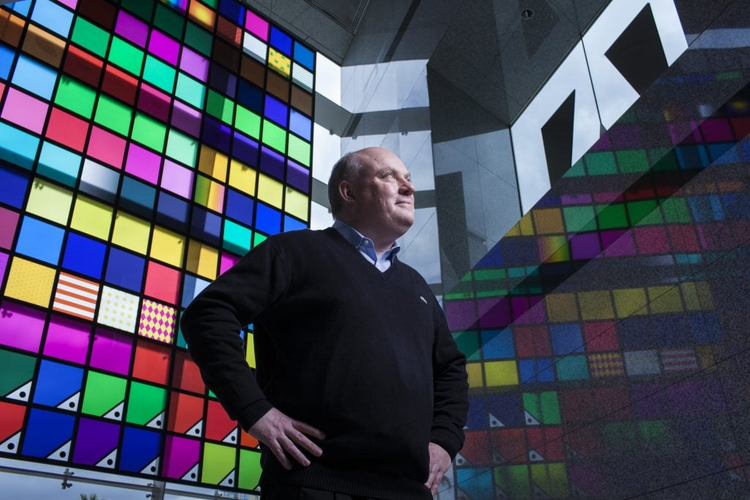What’s the Secret to a Thriving Research Lab? Interns.


http://blogs.adobe.com/conversations/files/2016/06/ADOBE_INTERNS_0345.jpg
In a land of tech giants and start-ups, how do companies like Adobe compete for ideas and talent, take big risks, and make an impact? The answer: A vibrant internship and university collaboration program.
You might be surprised to hear that. At some companies, interns are toiling away doing mundane tasks or short-term, safe projects. But here at Adobe Research, interns make significant contributions to our innovation agenda. During the summer, our research lab triples in size and buzzes with new ideas and energy with the arrival of our interns. In fact, nearly 50% of our technologies shipping in products resulted from projects that involved interns and/or university collaborators (students, postdocs, and faculty).
Some of our most advanced product features — and many of the technologies we preview at Adobe MAX and Summit — start as intern projects. For example, 3DPhotoMagic, Deep Font and the Liquify feature of Adobe Photoshop Fix had interns working on them.
![Infobits_intern_02[1]](./media_17eaaf2b3d745e3ad3d28b62ac9b719714972ee5a.png?width=750&format=png&optimize=medium)
http://blogs.adobe.com/conversations/files/2016/06/Infobits_intern_021.png
It’s made possible by hiring the right people and developing the right environment. Over the past 10 years, we’ve built a collaborative community of researchers and a culture of experimentation by forging research relationships with more than 70 of the top universities— MIT, Stanford, Duke, UC Berkeley, and Carnegie Mellon, just to name a few. But we draw our intern pool from universities around the world.
But those relationships are just the beginning. Top technical students have countless big name companies courting them. My job is to give the people who work for me the job I always wanted, including the interns. It’s challenging to stand out, but I’ve found there are three factors that can make a difference:
- Mentorship. We maintain a 2:1 intern to Adobe researcher ratio. That means interns have strong mentorship relationships with our full-time researchers whose specialties span from data science to 3D fabrication, to VR, to AR and beyond. And, our customers are some of the biggest in the industry – Some 41 trillion transactions are running across Adobe’s digital marketing business and that’s just half the story.
- Empowerment. We treat our interns like junior engineers, and they are thrown in the deep end. We don’t want them to copy something that’s out there. We want them to invent something new that is also plausibly linked to Adobe’s current and future products. It’s amazing what interns can do in 12 weeks when given the freedom to explore, and the constraint of a looming deadline.
- Visibility. We also provide opportunities for our interns to contribute to research publications and conferences like SIGGRAPH, Computer Vision and Pattern Recognition (CVPR), or the International Conference on Machine Learning (ICML). This year, we have an all-time company record number of intern papers and top industry paper number for the CVPR conference (20 total Adobe papers). Over the past three years, roughly 90% of Adobe’s technical publications originated from our collaboration with universities, a student or both (i.e. from interns and/or student collaborators at universities).
If you can align people’s idealism with their self-interest, you can move mountains. By paying them well, and giving the interns the opportunities to drive their own projects and publish the results, we help their blossoming industrial careers as well as adding momentum to the Ph.D. research work they are doing back at college. This leads to highly motivated interns who achieve amazing things in the amount of time they have to do a project.
Some companies would argue that giving intern projects this level of visibility is an unacceptable risk to their intellectual property, but we see it as an advantage. Everyone wins. Adobe benefits from the fresh thinking brought into the company by the interns, and the researchers can publish and collaborate more freely — ultimately leading to better work. We also attract key talent to the lab, knowing that their intellectual achievements won’t disappear into a black hole of secrecy.
Our internship program creates a thriving research lab that enables us to punch above our weight in Silicon Valley’s competitive landscape. Our published papers and patent filings nearly doubled since 2011 and our technology transferred to products is up 30% in the last three years.
![Infobits_intern_03[1]](./media_1c64ef5e3102f44b997805a3ec8964d166edfa20d.png?width=750&format=png&optimize=medium)
http://blogs.adobe.com/conversations/files/2016/06/Infobits_intern_031.png
An added benefit? Our intern program is a source of great future employees, and by the end of an internship and collaboration, we know them really well. Last year, 64% of our new research hires in North America were originally interns. In essence, our internship program represents a virtuous cycle of research — we can quickly scale high-potential projects and increase the scope of our collaboration since newly hired researchers can quickly mentor their own, additional interns as well as continue their work with former associates uninterrupted.
In the coming weeks, the Adobe Conversations blog will feature some of these amazing interns and the incredible work they’re doing. I hope you’ll be as excited about them as I am.